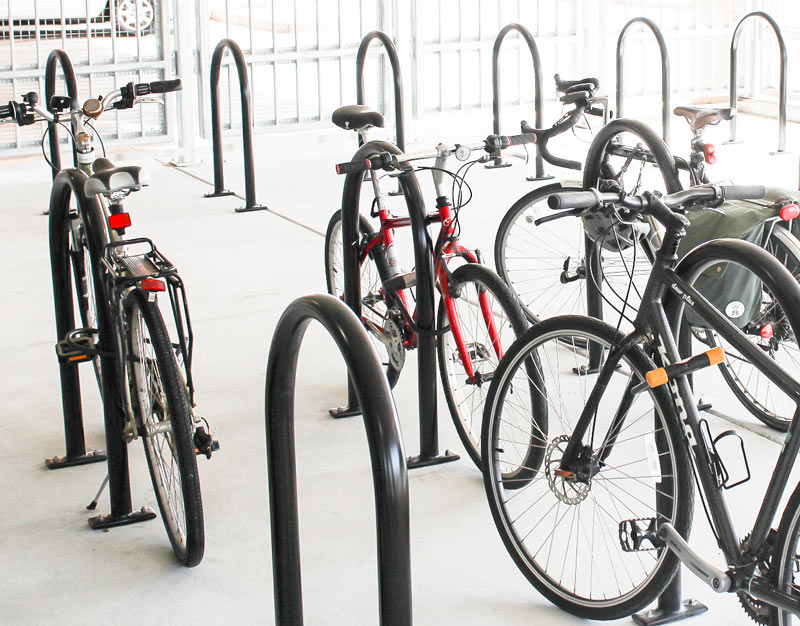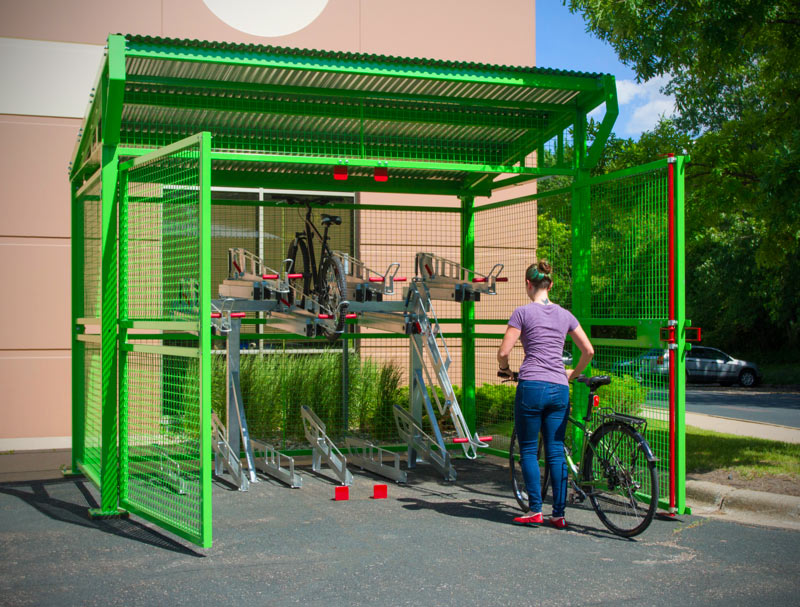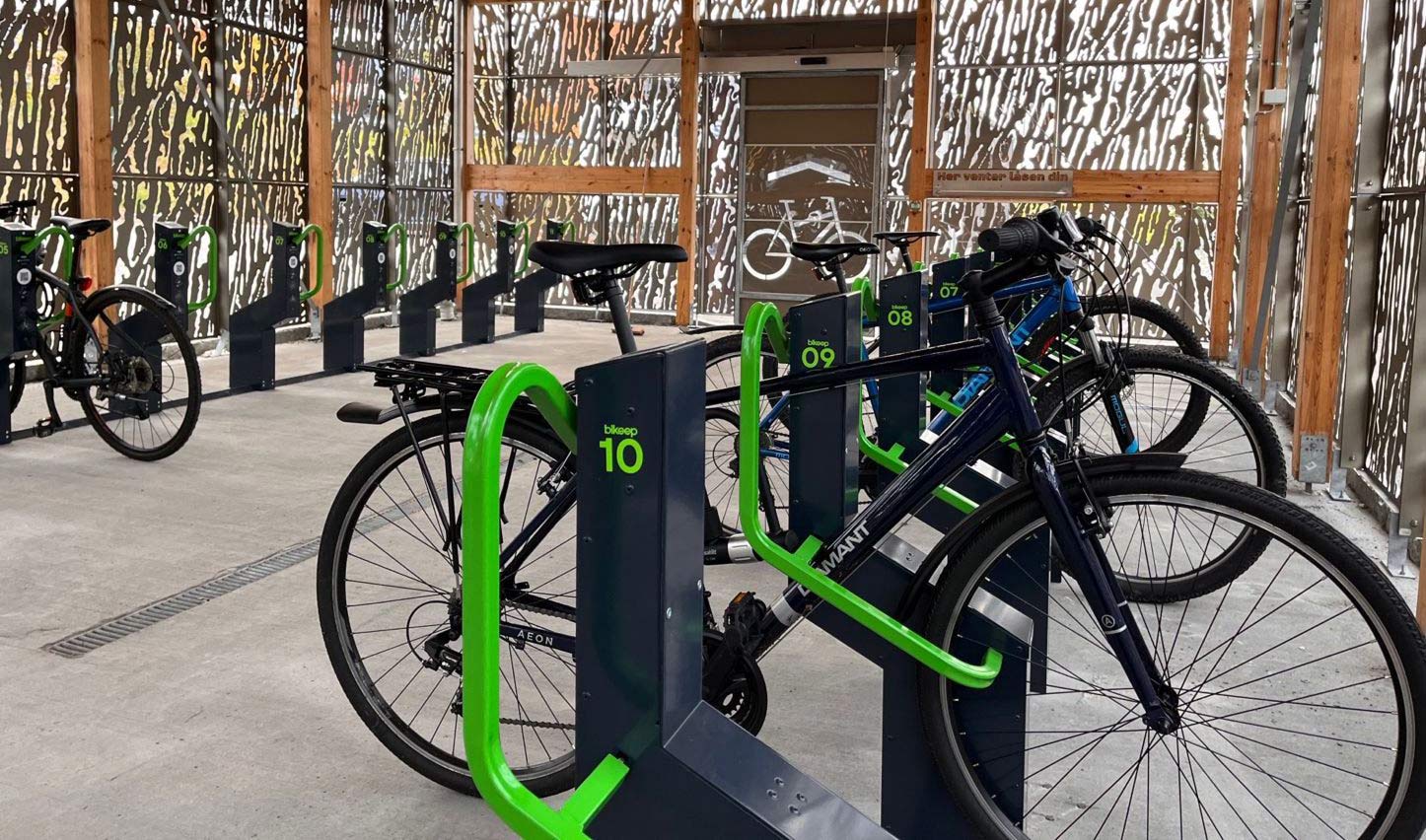Charging Ahead
An E-Bike Accommodation Guide for Architects and Property Owners
Introduction
The growing popularity of e-bikes has significantly influenced the design requirements for bike parking facilities. Unlike traditional bicycles, e-bikes tend to be heavier, larger, and come in a wider variety of shapes due to their integrated motors, batteries, and reinforced frames. These factors have implications for the types of bike racks used and the spacing allocated in parking areas. Property owners and planners must account for these changes to ensure their facilities can accommodate modern bicycle users effectively.
E-Bike Parts
E-bikes can be operated without electrical assistance just like a traditional bike, but the assistance of a battery-powered motor enables riders to enjoy extended range, easier hill climbs, and reduced effort during their journey.
E-bike batteries are typically lithium-ion, for their high energy density, lightweight design, and long lifespan. Most batteries can be removed and charged away from the bike.
Charging only certified batteries with the recommended charger, avoiding overcharging, and storing the battery at moderate temperatures are important practices for preserving the battery’s health.
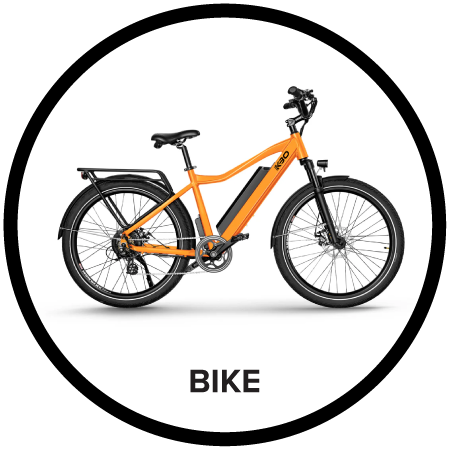
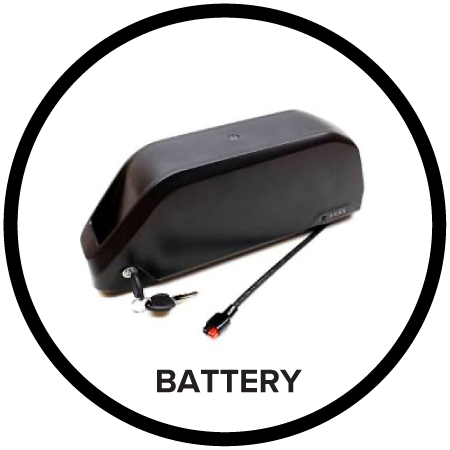
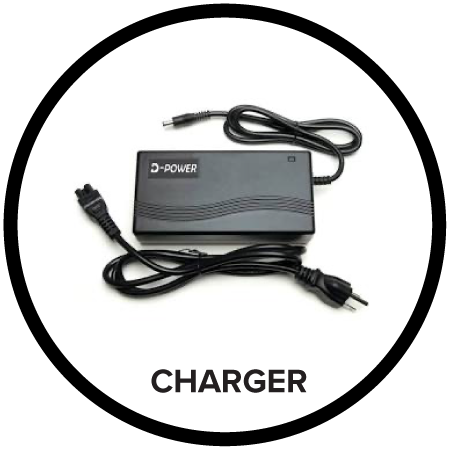
Providing Power
Catering to the growing demand for e-bike charging points is a smart move for any property looking to stay compatible with today’s cycling needs. As with any electrical system, thoughtful planning and procedures must be followed to implement a solution safely and effectively.
Here are some precautions and tips to consider when providing electrical hookups for e-bike charging.

Most standard e-bike chargers draw 4 amps continuously. We recommend a maximum of (4) receptacles per 20A circuit.

Display clear signage near each outlet identifying how many amps each outlet can safely provide per the location’s electrical system. The use of fast chargers, which draw a higher load, should be discouraged.

Any electrical safety device, such as a timer switch, should be certified by a nationally recognized testing facility.

Always consult a locally licensed electrician when planning new circuits and use caution when working with electricity!
Safe and Secure
Because e-bikes are typically more expensive than traditional bicycles, they require enhanced security measures when providing parking. Using racks with thick, square tubing makes them more resistant to common theft tools like pipe-cutters.
To further improve security, install these racks in a monitored area, such as under surveillance cameras or within restricted-access spaces, ensuring safer storage for e-bike users.
Charging points should incorporate time limits to help prevent overcharging and extend battery life.

Square tubing provides resistance to pipe-cutters.

Place racks in a monitored area

Timed charging helps preserve battery health
E-Bikes
Are Getting
Big
Battery powered assistance makes it much easier to pedal heavier loads with larger bikes, like cargo bikes. In fact, most bikes of this type being sold today are now electric, and are replacing cars for many individuals and families.
In the next section we’ll look at how to choose racks and set appropriate spacing for these larger bikes.

Space Use
Standard bike rack spacing, which often assume bikes will be parked tightly together, may lead to overcrowding and inconvenience if not adjusted for larger bikes. Providing additional clearance between a number of racks and ensuring aisles are wide enough for users to navigate with bulky e-bikes will improve usability and encourage more riders to use the facility.
Be aware that many cargo bikes will not be centered on the rack when parked. The diagrams on this page illustrate how cargo bikes (shown in blue) compare to a traditional bike (gray) when parked on a rack.
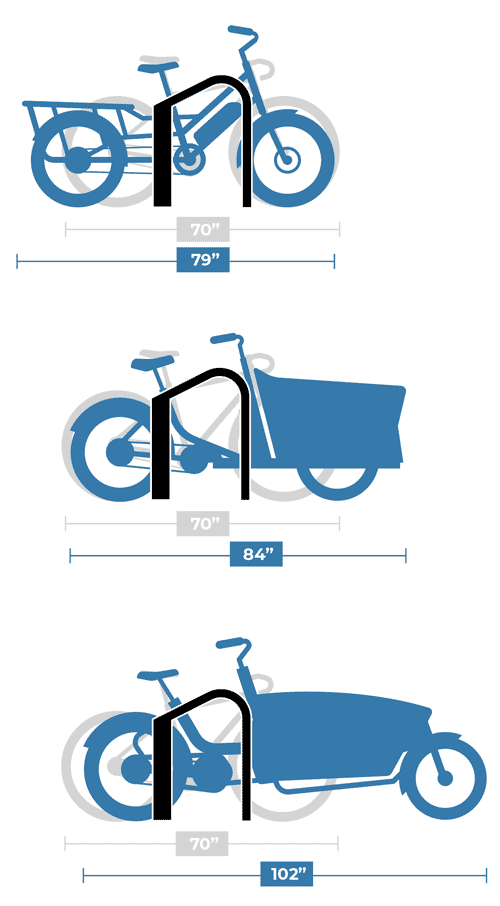
Let us help!
The most efficient and user-friendly way to allow space for cargo bikes will vary considerably from site to site. Dero can work with you to design a free CAD layout that maximizes your space while ensuring usability and accessibility.
Learn MoreThe Right Racks
E-bikes often weigh between 45 and 80 pounds, with some cargo models exceeding 100 pounds. While racks designed to hang bikes vertically may be sturdy enough to handle the heavier loads, your users may not be able to raise their bikes onto these racks.
When planning to accommodate e-bikes, be sure that at least a portion of your parking options include racks that leave the bike on the ground.

This bike room employs a combination of vertical racks for space-efficiency and horizontal racks for better compatibility with the wide variety of bike sizes and styles commonly seen today.

Charging Solutions by Dero
E-bike sales continue to outpace those of electric vehicles in the United States, and as their popularity grows so too, does the demand for the infrastructure to support their use. Dero provides a complete lineup of products designed to allow e-bike users to charge their ride while securely parked. Explore our product options below and help keep those e-bikes rolling!
Got Questions?




